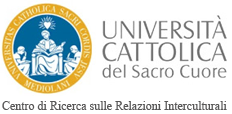
History and Origins
 Roma family ursari, Oltenia (Romania). © Stefano Pasta |
The history of the Romani groups is a multitude of histories: Many scholars agree that the Roma originally came from India. In the absence of reliable historical documents, it was glottologists who identified the Roma and Sinti people as a group originating from Central India, as they have linguistic and physical traits that are similar to those of the population in the area where Hindi and Punjabi are currently spoken. Until recently, the Romani populations that arrived in Europe were believed to belong to a single group that had left India for the West en masse. Nowadays, scholars are more inclined to believe that over a long period of time those Indian migrants, belonging to a variety of tribes, moved to Persia between 250 and 650 A.D. Since the early 15th century a number of different groups began to penetrate Europe from the Balkans. This migration involved numerically larger groups, which spread out through the whole all of Europe. Since then, the history of these populations has been characterised by episodes of intolerance and discrimination (anti-Gypsyism). In spite of all that, a study of the various ways in which Gypsy groups have integrated in urban and rural society over the centuries shows that some of them are well integrated in the local societies of Europe. |
|


